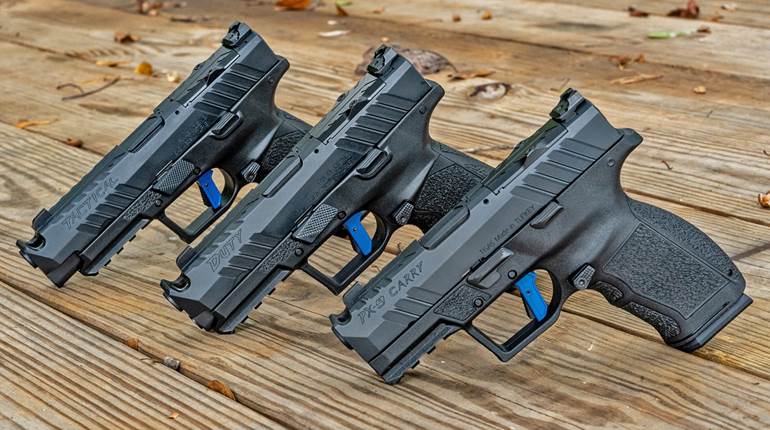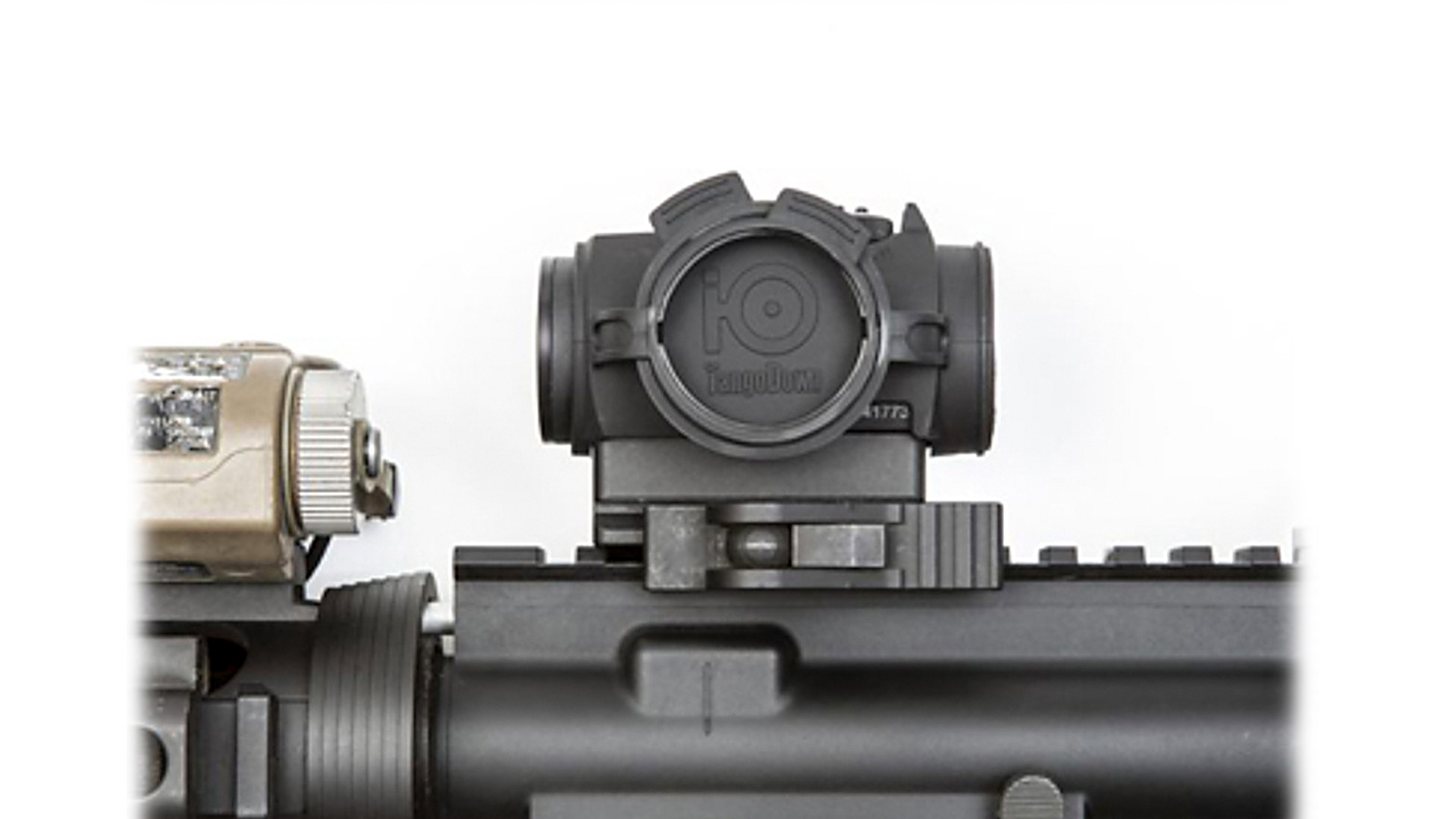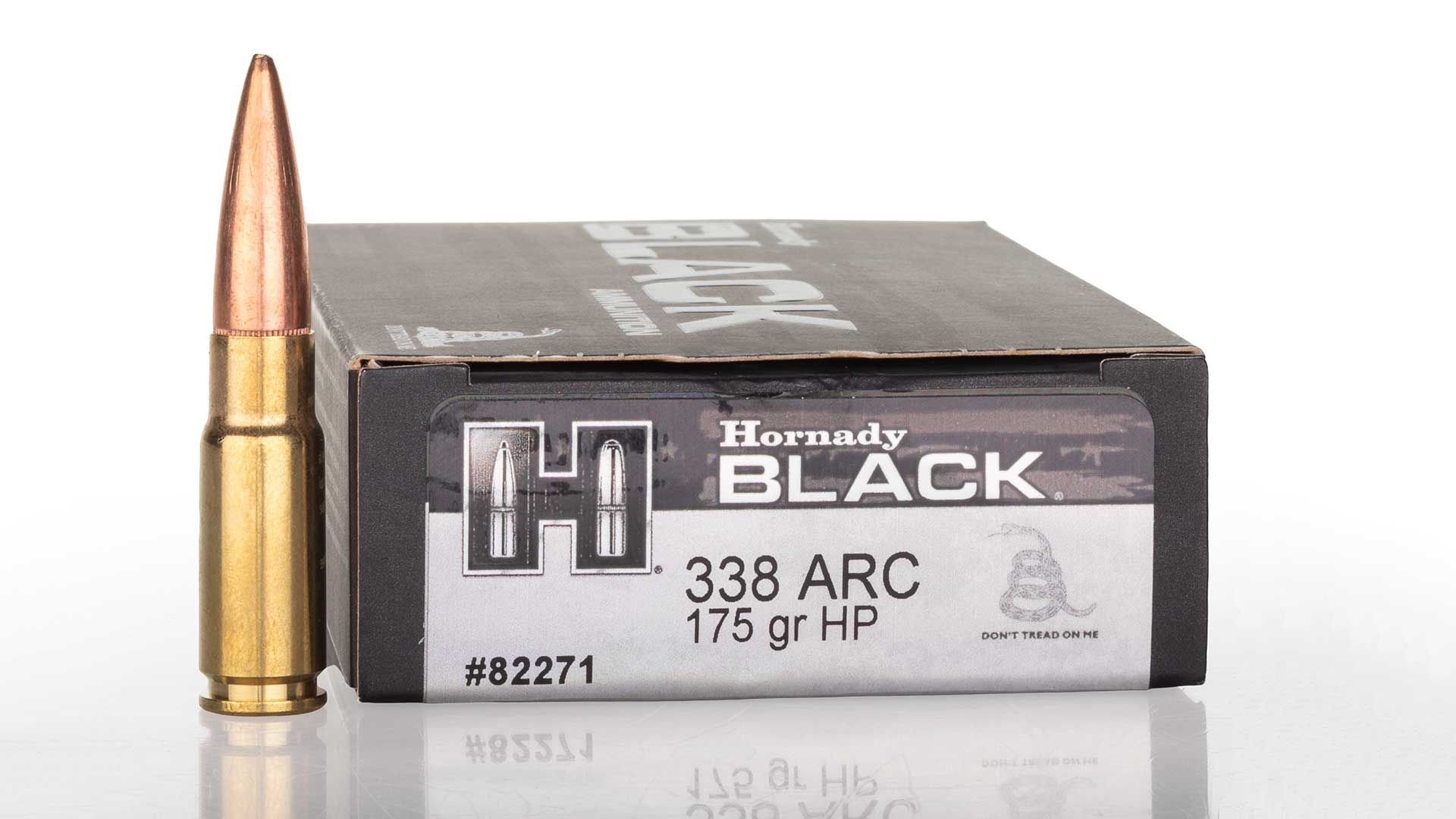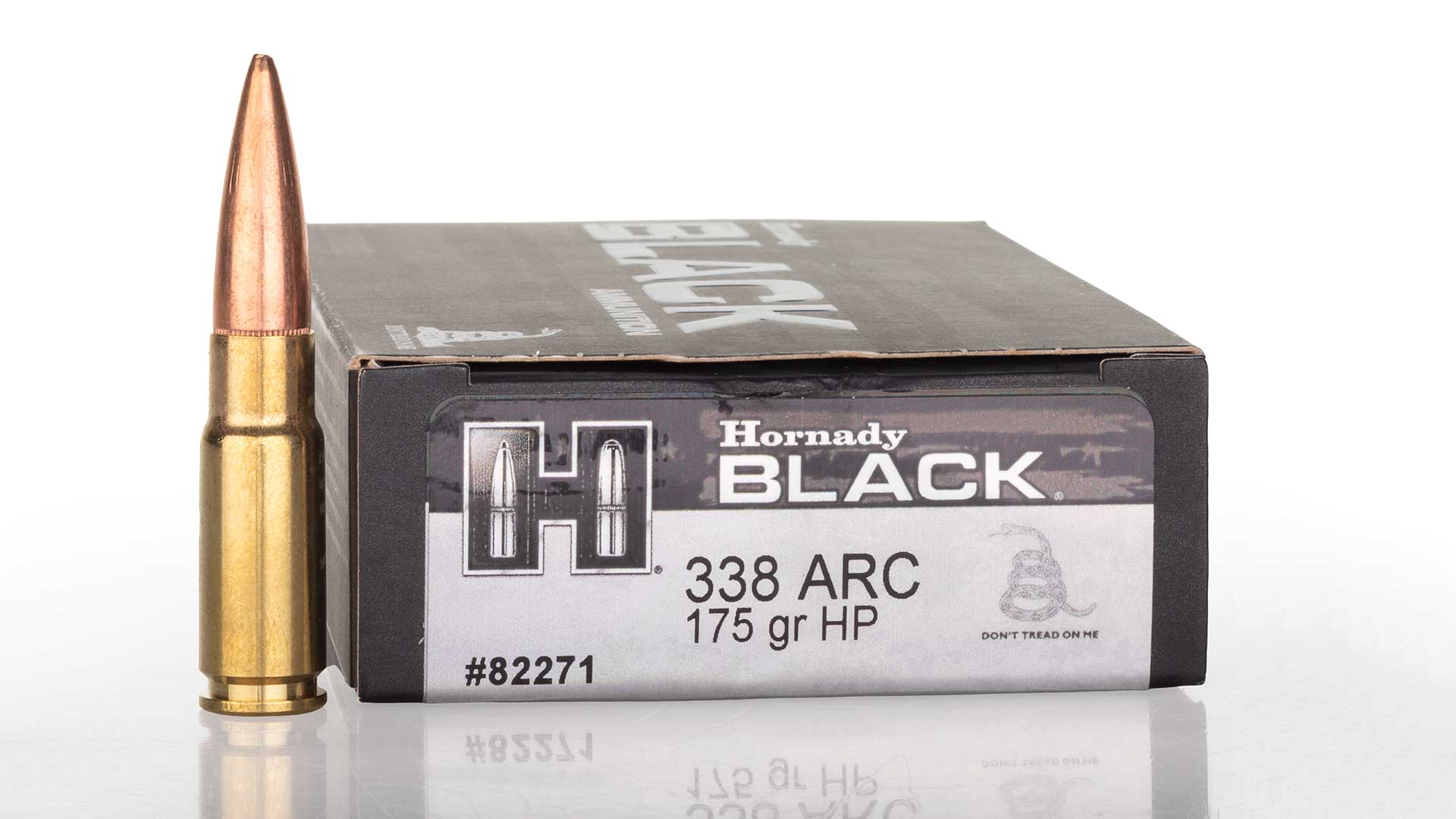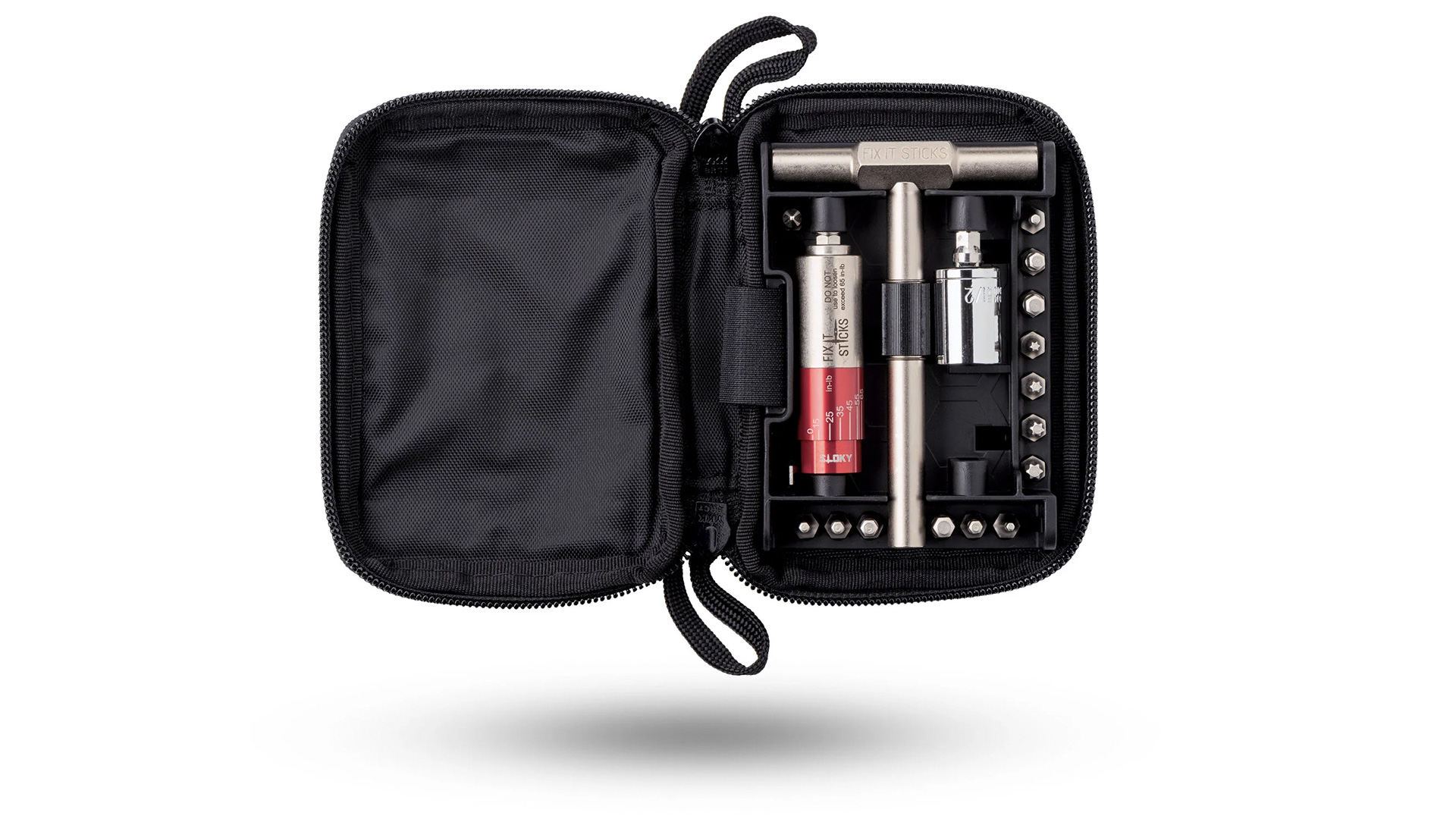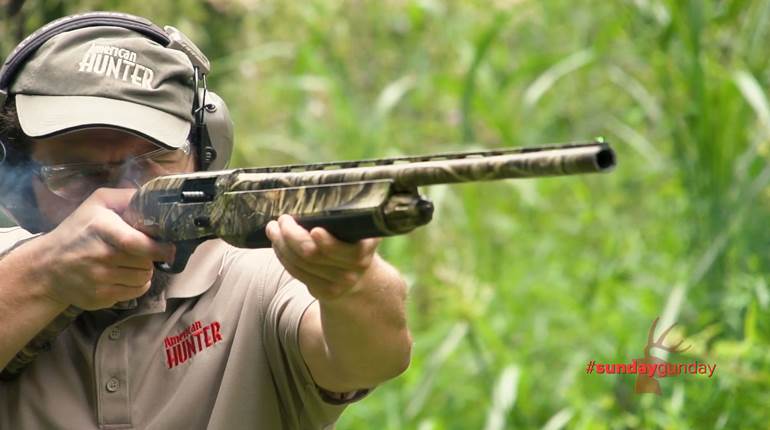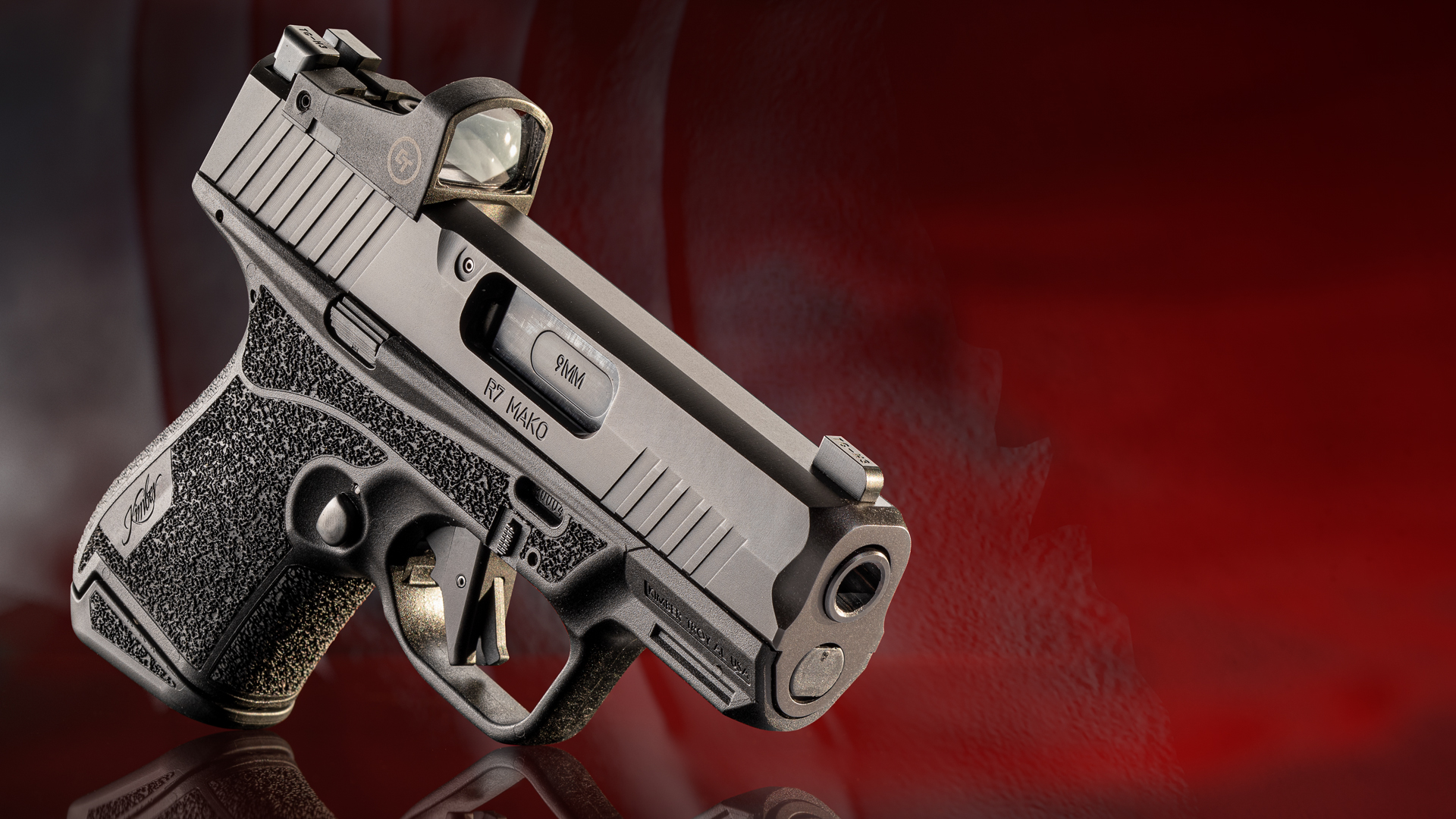
Something fishy is going on here. Kimber, a company long known for offering enhanced versions of the classic M1911 pistol, appears to have splashed into the hot micro-compact market with a gun called the R7 Mako that looks and feels nothing like any of its earlier offerings. That’s by design, though, because Kimber reached the same realization as many other gunmakers: Concealed-carry handguns are hot commodities, and micro-compact handguns are the hottest segment of that market. As we’ve learned before in these pages, the concept of diminutive pistols with double-stack magazines is nothing new, but the other variable of market success is timing. The right time, apparently, was about 2018, because that’s when SIG Sauer started the feeding frenzy with its P365. Many manufacturers followed with variations of the same theme, and before we knew it, the micro-compact became a category unto its own.
This being the case, the question naturally arises, “Isn’t Kimber a little late to the game?” While being first to market with a hot commodity is ideal, it isn’t necessarily bad to join the fray a bit later. The key is to come to market with something more than a mere, “Me, too!” product. Kimber’s been in position with the makings of the Mako for several years, and it’s been able to see how the market reacted as differing designs rolled out. By being the latest, the company’s given itself a chance to be the greatest, and while that’s a tall task in a crowded market, one fact is undeniable—Kimber ‘s R7 Mako has some little differences that may just make all the difference.
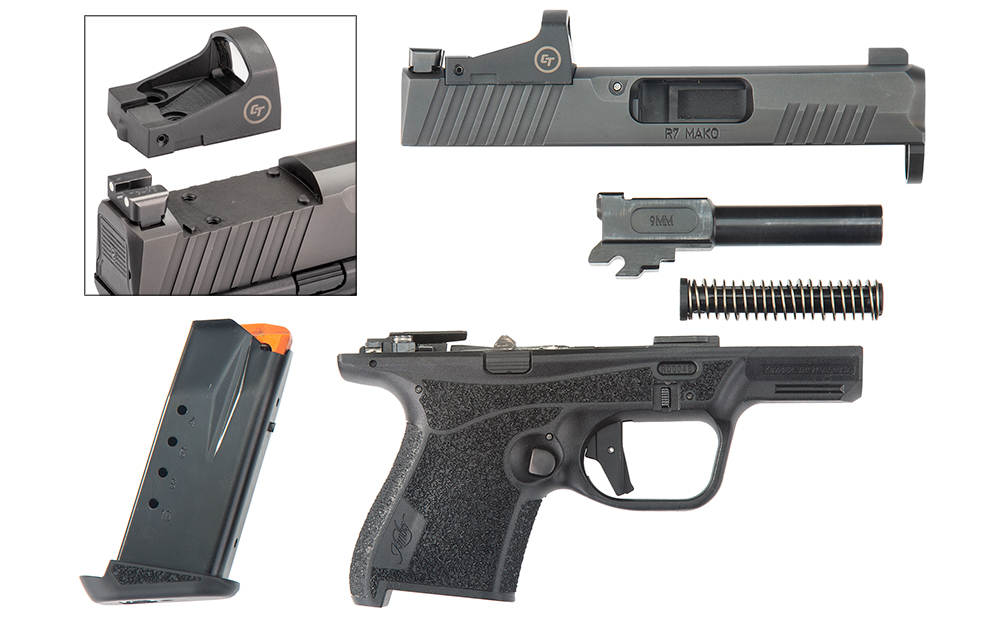
In a basic way, the Kimber R7 Mako is like many other concealed-carry handguns. It’s a polymer-frame, striker-fired, short-recoil design chambered in 9 mm Luger. That statement encapsulates a shocking number of designs available today, and that’s worth mentioning because it means something. This formula works, and I’ll go a step further: It’s time-tested. Three of those four technological concepts emerged at the turn of the 20th century, and now it’s time to put polymer frames into perspective. One of the first notable polymer-frame pistols, Heckler & Koch’s VP70, entered production more than half a century ago. Remington’s Nylon 66, one of the first firearms with a polymer receiver, hit store shelves in 1959. Mine still works great. Sure, maybe your dog can chew on a Glock grip, but all the responsible firearm owners are still running polymer-frame guns made before soda cans had pull tabs and ZIP codes were a thing.
So, if all these elements really aren’t new, then why’s the Kimber R7 even worth discussing? As they say, the devil’s in the details, and there are a few details on the Kimber worth talking about. One of the most notable differences between the Kimber and other micro-compact designs, indeed most handguns of this type, is the barrel lockup. A quick look at the R7 Mako reveals that it lacks the open-top slide to accommodate the SIG Sauer-style locking system in which the barrel hood locks into the top of the ejection port opening. Instead, the R7 Mako is built with a flat-top slide.
Lockup is accomplished by way of a tapered rectangular lug atop the chamber portion of the barrel that mates with a matching recess in the underside of the slide’s top. When a round is fired, the slide and barrel remain locked together momentarily, traveling rearward on the slide rails as one unit until chamber pressure drops sufficiently to allow safe unlocking, which is accomplished when an angled channel on the bottom of the barrel acts against what Kimber calls the breech (slide stop) pin running laterally through the central block mounted in the frame.
As the bottom edge of the channel is pushed against the pin, the barrel is forced downward, unlocking it from the slide. A U-shaped terminus at the front end of the channel prevents the barrel from traveling farther rearward once fully unlocked, allowing the slide to continue rearward to extract the spent case from the chamber. Of course, the concept of barrel lugs for lockup is far from new, having been used in many early designs. While the style used to lock the slide and barrel together in the Kimber is fairly novel in today’s market, the R7 Mako’s unlocking concept can be traced to the linkless Petter-Browning system first used on the French M1935 and is incorporated into most short-recoil pistols today. A little research reveals that the R7 Mako’s locking mechanism is similar to the enclosed-slide concept employed by Austrian handgun designer Wilhelm Bubbits on his BB6 pistol. In fact, Kimber told American Rifleman that it conferred with Bubbits early on during the Mako design process. Bubbits has a strong background in firearm design, having worked for the Austrian firms Glock and Steyr and developed his own pistols under the BB Tech banner.
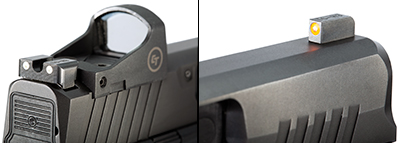
It’s all well and good having a unique system, but outside the hipsters and contrarians among us who merely feel the need for something different, there ought to be tangible benefits when departing from the norm. Fortunately, in Kimber’s case, there seem to be several. The first benefit is one the company touts in its marketing material, which is that it offers a greater degree of protection for the window of a mounted red-dot sight from the gas and debris blown out of the chamber upon firing. It’s not entirely evident that this was a dire issue in need of a solution, but it’s certainly plausible that the enclosed design of the R7 Mako does actually ensure there’s less chance for debris to obscure an optic. Another plausible benefit revealed itself during our testing. American Rifleman has had the opportunity to review every notable introduction within the micro-compact pistol market, and each pistol goes through consistent test protocols. Our accuracy testing with the R7 Mako indicated a striking degree of precision in five-shot groups, with averages coming in well under an inch at 7 yards, about half the group sizes of comparable guns using a SIG Sauer-style barrel hood lockup. It is theoretically possible that the use of a tapered rectangular lug such as the one found on the Mako’s barrel allows for more consistent lockup following each slide cycle. The tapered portion of each side of the rectangular lug offers a greater degree of self-centering during locking. One accuracy test of one handgun is hardly a definitive conclusion regarding the efficacy of any short-recoil system, but the results do suggest there’s something different about this gun. However, its lockup is only one part of the precision puzzle. Another critical component worth discussing is the trigger.
For many years, a striker-fired handgun trigger was less of a noteworthy feature and more of a con outweighed by the pros. The H&K VP70 might have been among the first polymer-frame pistols, but it’s also in contention for the worst trigger ever installed on a factory handgun. Fortunately, for today’s shooters, current offerings have come a long way from then, however, many are still unpleasant enough to support a robust aftermarket of drop-in trigger components. As far as the Mako is concerned, I think there will be little in the way of aftermarket options, and that’s because it doesn’t need one. This pistol has one of the best factory triggers on any handgun available today. The shoe is of a flat-faced design, with a small angled stop on its lower portion. There’s a blade-in safety with a matching profile and a fairly stout spring designed to prevent an impact from overriding the mechanism in the event the gun is dropped. Depressing the blade starts the pull, and users should be warned that a factory-fresh gun will have some grit in the trigger pull. This will smooth out with use. Pulling through the trigger, you’ll experience a break that comes somewhat abruptly the first time you attempt it. It’s quite difficult to discern the “wall” within the trigger pull the first few times, and when it breaks, it just snaps, crisply and cleanly. In fact, the trigger-pull weight feels significantly lighter than it measures. Kimber specs out its trigger from 5 lbs. to 6 lbs., 12 ozs., and ours registered 5 lbs., 3 ozs. on a Lyman digital trigger-pull gauge. This particular sample was the second received by American Rifleman, after the first test gun measured below Kimber’s factory minimum at 4 lbs., 8 ozs., of pull weight. Upon testing this second sample, however, multiple staff members could feel no discernible difference between the two triggers. The break itself is remarkably consistent, varying by only a few ounces at most throughout our pull-weight testing. This consistency, no doubt, contributes to the inherent precision displayed in our shooting results. Overtravel is limited, however, the short-reset point is a little farther forward than I’d personally like it to be, but it’s still short enough to allow for rapid shots and quick follow-ups. There’s no texturing on the face of the trigger shoe, and the edges of the shoe have a rounded profile that prevents the trigger finger from becoming irritated during longer strings of fire.
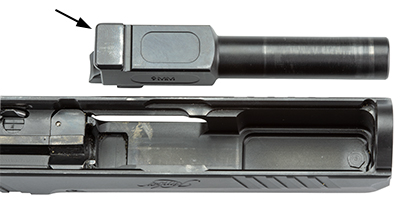
Another positive feature of the R7 Mako is the inclusion of a milled section of the slide just forward of the rear-sight dovetail that accommodates a mounted red-dot sight. The firearm market is rapidly approaching a state where such slide cuts are not only welcome, they’re expected. Fittingly, Kimber doesn’t even offer an uncut slide for its R7 Mako, a choice that not only simplifies manufacturing, it’s also an implicit recognition of the dominant demand for optics-ready handguns. Two models are available in the Mako lineup, one Optics Installed option and one without. Those ordering the omitted-optic option will find a contoured cover in place of a mounted MRD. The slide cut will accommodate any red-dot sight sharing the Shield footprint. For $200 more, Kimber offers its R7 Mako with a factory-installed Crimson Trace CTS-1500 reflex sight, which features a 3-m.o.a. dot and a 5,000-hour runtime at a mid-range brightness setting. The optic includes automatic brightness adjustment that matches ambient lighting conditions, and it runs off a single CR2032 battery. It’s worth noting that comparable Crimson Trace MRDs can be found for as little as $120 online as of this writing, so it’s possible to save a few bucks off Kimber’s Optics Installed MSRP if you’re willing to mount your own red-dot sight.
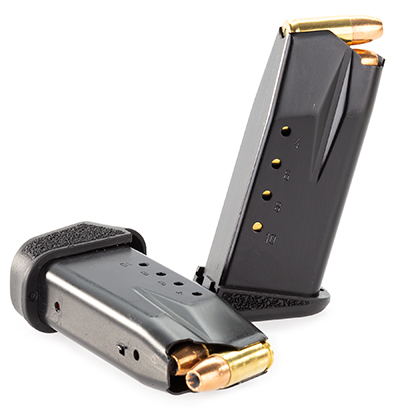
There’s more to like about the Kimber than just these three noteworthy elements, but most of what’s left are features that are certainly welcome on a modern CCW pistol but not necessarily groundbreaking. Kimber included mirrored controls on its R7 Mako, making it truly lefty-friendly. Not enough handguns have concessions to the left-handed among us, and really, the benefit extends to more than just this small market segment. Bilateral controls mean that even right-handed shooters can make full, effective use of a gun should their strong hand be injured or otherwise occupied in a fight.
The magazine-release button is recessed within a dish-shaped depression on either side of the frame and features an untextured surface. Despite this, magazines were easily ejected and rocketed out of the magazine well with authority. Takedown is accomplished in the Glock style, requiring the slide to be pulled 1/4" to the rear and the two takedown tabs on the forward portion of the frame to be pulled downward. Once the tabs are pulled, simply allow the slide to return to its forwardmost position and pull the trigger. The slide can then be pulled forward and lifted off the frame. One point to note is that the Mako top end does not travel fully forward to slide off the frame. There are four interrupted slots within the slide rails that align with the frame rails. Once the slide reaches this point, approximately 1/3" forward off the frame, it can be removed. The frame itself is well-textured and features a contoured profile on the sides of the grip, as well as the backstrap. The slight swell on the sides of the grip give the gun a fuller feel without making it overly bulky. This certainly helps in the control category, as does the pronounced heel on the backstrap. Upon first handling of the gun, the backstrap seemed almost too pronounced for a natural aiming grip, but after spending quite a bit of range time with the pistol, it was evident that Kimber hit a good note with this angle.
 Provided that shooters assume a good shooting grip, with the web of the hand tight against the beavertail, the grip forces the wrist to rotate downward slightly when entering a firing grip, which is a more robust position that’s better able to compensate for recoil. Despite the R7 Mako’s diminutive size, the gun was quite pleasant to shoot, allowing testers to leave the range without that punched-in-the-palm feeling usually experienced when shooting micro-compact handguns. Kimber includes one flush-fit 11-round magazine and one extended 13-round magazine with each pistol, and each magazine has a contoured floorplate that curves away from the shooter’s palm, with the 13-rounder having a more pronounced outward curve. This means that the heel of the grip frame is the anchor point for the gun in the pit of the palm, enhancing controllability with either magazine, but the extended 13-round magazine does offer additional space for a third finger.
Provided that shooters assume a good shooting grip, with the web of the hand tight against the beavertail, the grip forces the wrist to rotate downward slightly when entering a firing grip, which is a more robust position that’s better able to compensate for recoil. Despite the R7 Mako’s diminutive size, the gun was quite pleasant to shoot, allowing testers to leave the range without that punched-in-the-palm feeling usually experienced when shooting micro-compact handguns. Kimber includes one flush-fit 11-round magazine and one extended 13-round magazine with each pistol, and each magazine has a contoured floorplate that curves away from the shooter’s palm, with the 13-rounder having a more pronounced outward curve. This means that the heel of the grip frame is the anchor point for the gun in the pit of the palm, enhancing controllability with either magazine, but the extended 13-round magazine does offer additional space for a third finger.
Pun-worthy name aside, Kimber’s R7 Mako has quite a few positive features going for it. With more than 8 million new gun owners recorded in 2020, many of them women and minorities, it’s clear that there’s still room for companies to reach a significant number of people who are buying guns with an eye toward personal defense. These consumers are entering a market with more options than have ever been available. Some may lament the number of like models in the CCW space, but more options are always better in a free market. The greater our choices, the more particular consumers can be regarding their selection, and that ultimately means they’re more comfortable with whatever gun they buy. That’s a conclusion we all should champion.
Kimber’s team deserves praise for its careful attention to the common features found in many of today’s offerings, and it kept the good while improving upon the not-so-good. What’s also praise-worthy is Kimber’s implicit recognition that today’s gun-owner demographic is moving into a different space. Kimber found great success in its carry-size lineup of M1911s for decades, and that’s because the company catered to a generation of shooters who developed their skills with one of the many makes of John Browning’s iconic .45. Today, a new generation of shooters is coming up, and most of them have honed their skills with Glocks, not with M1911s. It stands to reason that they should find a carry-ready pistol that fits with what they’ve learned, and Kimber’s R7 Mako blends time-tested features with the modern elements that modern shooters want.












